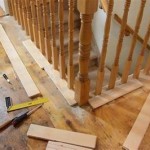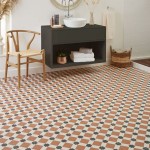Construction Adhesive for Laminate Flooring: A Comprehensive Guide
Laminate flooring offers a durable and aesthetically pleasing alternative to hardwood and other traditional flooring options. Its ease of installation, relative affordability, and wide range of design possibilities make it a popular choice for both residential and commercial spaces. While many laminate floors are designed for "floating" installation – where the planks interlock and rest atop an underlayment without being directly attached to the subfloor – construction adhesive provides an alternative method that offers distinct advantages in specific situations.
This article delves into the use of construction adhesive in laminate flooring applications, focusing on its application, benefits, potential drawbacks, and best practices for achieving a durable and professional installation. Understanding the nuances of using adhesive with laminate flooring is crucial for ensuring a long-lasting and visually appealing result.
Understanding Construction Adhesive and Its Role
Construction adhesive, also known as multi-purpose adhesive or subfloor adhesive, is a type of bonding agent formulated to permanently adhere building materials together. Unlike simple glues, construction adhesives are engineered to provide a high degree of strength and flexibility, capable of withstanding the stresses associated with structural components and flooring applications. These adhesives typically consist of synthetic rubber, polymers, and resins, creating a robust bond that resists moisture, temperature fluctuations, and movement.
In the context of laminate flooring, construction adhesive offers a viable alternative to the traditional floating installation method. Instead of solely relying on the interlocking mechanism of the laminate planks and the friction provided by the underlayment, adhesive bonds the planks directly to the subfloor. This direct adhesion provides enhanced stability, reduces movement, and minimizes the potential for gaps or separations between planks, especially in areas with high foot traffic or uneven subfloors.
Selecting the appropriate construction adhesive is paramount for a successful laminate flooring installation. Factors to consider include the type of subfloor (e.g., concrete, plywood, OSB), the specific manufacturer’s recommendations for the laminate flooring, and the expected environmental conditions (e.g., humidity, temperature). Water-based adhesives are often preferred for their ease of cleanup and lower VOC (volatile organic compound) emissions, while solvent-based adhesives may offer superior bond strength and water resistance. Always consult the adhesive manufacturer's specifications to ensure compatibility with the laminate flooring and the subfloor material.
Benefits of Using Construction Adhesive with Laminate Flooring
Employing construction adhesive in laminate flooring installations offers several key advantages, particularly in scenarios where floating installations might prove problematic. These benefits extend beyond simple adhesion, contributing to the overall longevity and performance of the flooring system.
Enhanced Stability and Reduced Movement: One of the primary benefits of using construction adhesive is the increased stability it provides to the laminate flooring. By directly bonding the planks to the subfloor, the adhesive eliminates the potential for lateral movement and shifting, which can occur in floating installations due to expansion and contraction caused by temperature and humidity changes. This stability is especially beneficial in large rooms or areas with drastic temperature fluctuations, where the cumulative movement of floating planks can lead to noticeable gaps and uneven surfaces. Furthermore, it mitigates noise reduction by limiting the potential for planks to rub against each other or the subfloor.
Improved Durability and Resistance to Wear: Adhesive-bonded laminate flooring often exhibits greater durability and resistance to wear compared to floating installations. The direct bond to the subfloor distributes weight and pressure more evenly across the surface, reducing the likelihood of individual planks becoming damaged or dislodged under heavy foot traffic or furniture. This is especially advantageous in commercial settings or high-traffic areas within residential properties. The bond creates a more unified surface, lessening the impact on tongue and groove interlocking systems.
Mitigation of Subfloor Imperfections: Even with careful preparation, subfloors are rarely perfectly level or smooth. Minor imperfections, such as slight undulations or variations in height, can cause problems with floating laminate floors, leading to uneven surfaces or a hollow sound when walked upon. Construction adhesive can help compensate for these imperfections by filling small gaps and providing a more uniform bonding surface. This ensures that the laminate flooring sits flush against the subfloor, creating a more solid and stable foundation. It is important to note that adhesive will not correct major subfloor issues; those should be addressed pre-installation.
Potential Drawbacks and Considerations
While the use of construction adhesive offers several advantages, it is crucial to acknowledge the potential drawbacks and considerations associated with this installation method. A thorough understanding of these factors is essential for making an informed decision and ensuring a successful outcome.
Increased Installation Complexity: Installing laminate flooring with adhesive is generally more complex and time-consuming than a floating installation. The process requires careful application of the adhesive, precise plank placement, and potentially longer curing times. Furthermore, mistakes are less forgiving, as removing and repositioning planks after the adhesive has set can be difficult and may damage the flooring or the subfloor. Accurate measurements and planning are imperative.
Difficulty with Future Repairs and Replacements: Removing or replacing individual planks in an adhesive-bonded laminate floor can be significantly more challenging than with a floating installation. The strong bond between the planks and the subfloor makes it difficult to lift the flooring without causing damage to adjacent planks or the subfloor itself. Consequently, repairs may require more extensive work and potentially the replacement of a larger area than would be necessary with a floating floor. Careful consideration should be given to having extra boxes of the product on hand for future repairs, especially for discontinued lines.
Potential for Adhesive Failures: The long-term performance of an adhesive-bonded laminate floor relies heavily on the quality of the adhesive and the thoroughness of the installation. If the adhesive is not properly applied, is incompatible with the subfloor or laminate material, or is subjected to excessive moisture or temperature extremes, the bond may weaken over time, leading to delamination or separation of the flooring. Proper subfloor preparation, including cleaning and priming, is critical to ensure adequate adhesion. Furthermore, selecting a high-quality adhesive recommended by the laminate flooring manufacturer is essential for long-term durability.
Best Practices for Installation with Construction Adhesive
To maximize the benefits and minimize the potential drawbacks of using construction adhesive with laminate flooring, adherence to best practices is crucial. These practices encompass subfloor preparation, adhesive selection and application, plank placement, and post-installation procedures.
Thorough Subfloor Preparation: The subfloor must be clean, dry, level, and structurally sound before applying any adhesive. Remove all debris, dust, paint, or previous flooring materials. Repair any cracks or imperfections and ensure the subfloor is properly leveled. For concrete subfloors, consider moisture testing to ensure acceptable moisture levels before installation. A primer may be necessary to improve adhesion on porous surfaces. Failure to properly prepare the subfloor is the most common cause of adhesive failure.
Proper Adhesive Application: Apply the construction adhesive according to the manufacturer’s instructions, using the recommended trowel notch size and pattern. Ensure even coverage and avoid applying excessive amounts of adhesive, which can lead to squeezing between the planks and difficulty in achieving a flush surface. Work in small sections to prevent the adhesive from drying out before the laminate planks are installed. Consult the adhesive's technical data sheet for specific open time and cure time recommendations.
Precise Plank Placement and Alignment: Carefully align each laminate plank and press it firmly into the adhesive, ensuring full contact with the subfloor. Use spacers to maintain consistent expansion gaps around the perimeter of the room and between individual planks, as recommended by the laminate flooring manufacturer. Regularly check for levelness and alignment to prevent uneven surfaces or gaps. Immediately remove any excess adhesive that squeezes out between the planks using a damp cloth. Protect the newly installed floor from foot traffic until the adhesive has fully cured, as specified by the manufacturer.
Acclimation of Laminate Flooring: Allowing the laminate flooring to acclimate to the room's environment prior to installation is crucial, regardless of the installation method. Store the unopened boxes of laminate in the room where they will be installed for at least 48 to 72 hours before beginning the project. This allows the flooring to adjust to the temperature and humidity levels, minimizing expansion or contraction after installation. Failing to acclimate can result in buckling, gapping, or other issues.
By carefully considering these factors and adhering to best practices, a successful and long-lasting laminate flooring installation using construction adhesive can be achieved. The choice between adhesive and floating installation ultimately depends on the specific project requirements, the condition of the subfloor, and the desired level of stability and durability.

Floor Adhesive Never Miss A Step Again

Wood Flooring Q A Can We Use Construction Adhesive For Floor Business

Efficient Installation Of Floor Coverings Helios Kemostik

How To Choose The Right Adhesive For Your Flooring Type

Adhesive Solutions For Flooring And Carpeting Avery Dennison

Laminate Flooring Or Glued Which Is Best

Gluing Hardwood Floors Your Comprehensive Installation Guide
Lining An Old Staircase With Laminate Renovation

Flooring Adhesive Waterproof Construction Good Adhesion And Compatibility Wood Floor Glue China Ixpe Spc Made In Com

Vinyl Vs Laminate Flooring Pros Cons And Differences Forbes Home








